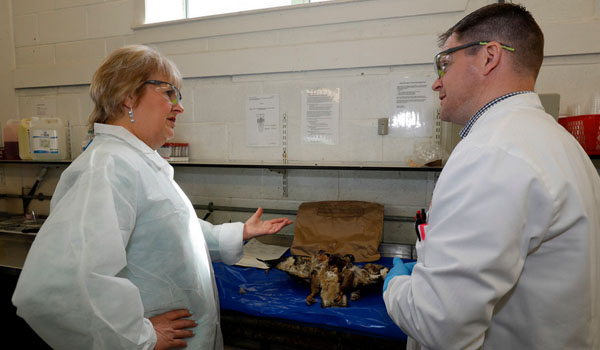Partnership boosts wildlife forensic capability
Wildlife forensics in Scotland will benefit from academic expertise following a new collaboration with the University of Edinburgh.
Wildlife forensics in Scotland will benefit from academic expertise following a new collaboration with the University of Edinburgh.
The Wildlife Forensics Development Programme will create formal ties between the Scottish Governments Wildlife DNA Forensics (WDF) unit and university researchers at the Royal (Dick) School of Veterinary Studies.
The partnership is intended to provide a platform for international research and training, supporting animal DNA experts in their investigations.
It was launched at the Society for Wildlife Forensic Sciences symposium in Edinburgh on Wednesday (June 7) held outside the US for the first time.
Environment Secretary Roseanna Cunningham said: As hosts to the UKs only dedicated wildlife DNA forensics lab, Scotland is leading the way when it comes to using forensic science to shape wildlife law enforcement.
Forensics can provide evidence that an offence has been committed and plays an important role investigating trade routes and poaching.
The new Wildlife Forensics Development Programme builds on Edinburghs strong reputation for biosciences, taking a progressive approach that will strengthen the links between enforcement, policy and forensics.
The WDF unit was established in 2011 as part of the Scottish Governments Science and Advice for Scottish Agriculture (SASA) laboratory.
The team analyses evidence in wildlife crimes ranging from trace samples of blood and feathers to powdered medicines and ornaments made of animal tissues.
This testing can identify the species present in cases where non-forensic evidence is inconclusive.
The WDF unit also conducts more detailed analysis, such as paternity testing captive birds of prey to determine if their breeding records are correct.
In 2015, it secured the first conviction for deer poaching using DNA evidence after matching a bloodstain in a gamekeepers vehicle with samples from an animal carcass found in Lochaber.
Weeks later, three men were found guilty of animal cruelty when the WDF unit connected DNA from a dead badger with forensic evidence from the mens clothes.
Dr Rob Ogden, president of the Society for Wildlife Forensic Science, said the fight against wildlife crime requires a coordinated response.
Forensic science has revolutionised criminal investigations and is now being employed to help protect some of the worlds most threatened species from persecution and illegal trade, he added.


